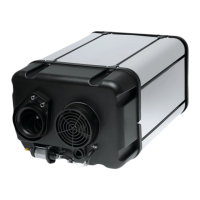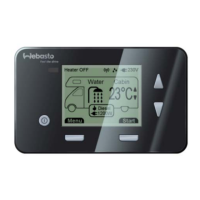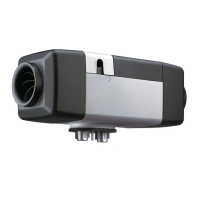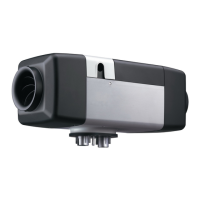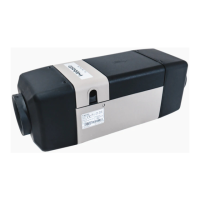1 Introduction Dual Top Evo 6 / 7 / 8
102
1.4.2 General safety information
Follow all the safety informations described in the additional
documentation thoroughly.
The opening of the exhaust pipe is to be routed upward, to
the side or, with exhaust gas routing under the vehicle floor,
up to the proximity of the side or rear limitation of the cab or
the vehicle.
The function of parts important for vehicle operation may not
be impaired. It must not be possible for condensate or water
to collect in the exhaust pipe. Drain holes are allowed.
Electrical lines, switching and control units of the heater must
be positioned in the vehicle so that their proper operation
cannot be impaired under normal operating conditions.
For the routing of fuel lines and the installation of additional
fuel tanks please refer to the detailed descriptions in the
installation instructions.
The main points are:
– Fuel lines must be designed so that twisting of the
vehicle, movements of the engine, etc. have no negative
effect on the service life. They must be protected against
mechanical damage.
– Fuel-carrying parts must be protected against heat that
could interfere with operation and positioned so that
dripping or evaporating fuel can neither collect on hot
parts nor ignite on electrical devices.
The heat exchanger and water boiler on Dual Top Evo
heaters are exposed to very high thermal stress and
must be replaced by genuine Webasto spare parts ten
years after these are used for the first time. The heater
must then be provided with a sign which bears the date
of sale and the word "Original spare part".
When replacing the heat exchanger, it is also mandatory to
replace the overheating protection element (temperature
sensor) in order to prevent possible faults when using the old
temperature sensor.
When installed in the interior, the Dual Top heaters are
prepared for installation and sealing directly on the cab floor.
With the accessories available from Webasto, detachable
connections of the combustion air and exhaust lines are not
permitted in the vehicle interior.The seal between the heater
mounting and the vehicle floor must always be installed,
otherwise harmful emissions may get into the interior of the
vehicle.
Cold and cooling and combustion air intake openings must
be positioned so that no water can penetrate during a water
crossing permissible for the respective vehicle.
The heater must be switched off at filling stations and tank
farms as a result of the risk of explosion.
Wherever inflammable vapours or dust may form (for
example in the vicinity of fuel, carbon, wood dust or cereal
stores or the like), the heater must be switched off as a result
of the risk of explosion.
The heater must not be operated in enclosed areas such as
garages and workshops without an emissions extraction
system, even if you use the timer, because of the risk of
asphyxiation and poisoning.
In case of longer lasting smoke emission,
unusual combustion noises or fuel odours, the heater must
be shut down by removing the fuse and may not be returned
to operation again until after it has been checked. Claims can
only be made if it can be verified that the claimant has
complied with the servicing and safety instructions.
Installation specification for Webasto fuel tank for the fuel
supply of heaters in vehicles:
• In motor coaches, installation in the passenger or driver's
compartment is not permissible.
• The fuel filler neck may not be located within the
passenger or driver's compartment on any vehicle.
The fuel lines (mecanyl hose) must not make direct contact to
the exhaust pipe and must be thermally insulated if
necessary, as otherwise there is a fire danger.
All fuel-carrying lines must be connected leak-tight, must not
be damaged and must be inspected regularly (at least at the
same interval as the vehicle inspection).
Put the heater out of action by removing the fuse.
Overheating
Keep the cold air inlet and hot air outlet free of dirt and
objects. Soiled, blocked air lines can result in an overheating
switch-off.
After an overheating switch-off, the air routing must be
checked for free passage and all materials which impair the
flow of air must be removed or damage to the air routing
must be repaired.
Then the heater lock-out must be eliminated by switching the
heater off and then on again.
The air outlet nozzles or air outlets with adjustable flaps must
always be opened in such a way that an air flow through the
heater is not completely blocked. At least 30 % of the air
outlets must be non-closable.
If the heater is installed in a stowage space, it must be
ensured that no flammable substances are stored in this
space and that the air supply to the heater is not restricted by
other material.
NOTE:
If damage or leaks are determined in the fuel line,
the heater must not be operated until the damage
has been repaired.
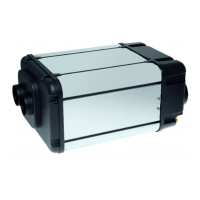
